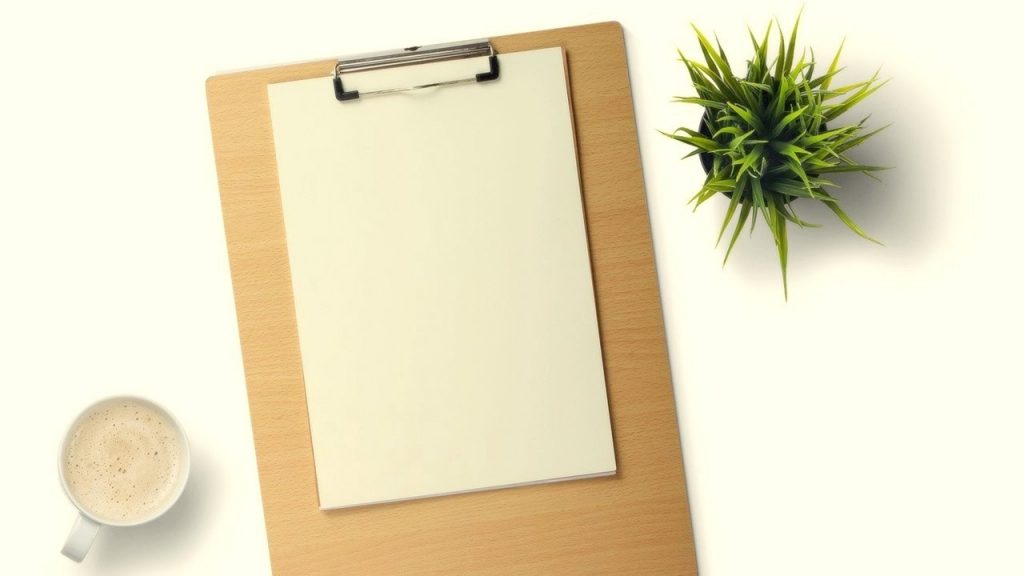Creating a resume in MS Word step by step might sound like a big deal, especially if it is your first time and all you have got is a blank screen in Microsoft Word staring back at you. Trust me, I get it. I have been there, done that! However, don’t stress; we will tackle this together step by step. Consider your resume your highlight reel; it is your chance to show off what you bring, even if you are starting.
Maybe you are wondering, “Why not just use one of those fancy resume builders online?” They are friendly, but nothing beats learning to craft one yourself in MS Word. You will pick up some sweet skills you can use later on for resumes and documents. Plus, by the time we’re through, you will have a resume that’s yours, from the layout to the fonts and every little detail. Ready to dive in?
Step 1: Open Microsoft Word and Set Up a New Document
Choosing a Blank Document or Resume Template
The first step is simple—open up Microsoft Word. Once you’re in, you’ll have two choices: start with a blank document or pick a resume template. Templates can be a great shortcut because they’re pre-designed and keep everything neat, but if you want more control over the design, the blank document route is the way to go. Templates are usually in the “New” section; type “Resume” in the search bar, and Word will pull up a few options.
Setting Document Margins and Layout
Let us get those margins right if you are rolling with a blank document. Click “Layout” in the top menu and set your margins to 1 inch on all sides. This gives your resume breathing room and keeps it from looking cramped. A clean layout will keep recruiters’ eyes on the prize—your skills and experience.
Step 2: Choose a Clean, Readable Font
Font Recommendations
Your resume’s font is its voice. Unlike a party invitation or rigid corporate memo, you want it to sound professional and approachable. Stick to classic fonts like Arial, Calibri, or Times New Roman—these fonts are easy on the eyes and ATS (Applicant Tracking System) friendly. Font size? Aim for 11 or 12 points, but feel free to bump up headings slightly for emphasis.
Emphasizing Headings and Sections
Headings are your resume’s backbone. They help guide the reader through your story, making them stand out. Try bolding them or even going up a size. Consistency is vital; if you bold one heading, bold it all.
Step 3: Create a Header with Your Contact Information
What to Include
Time to make sure recruiters know how to reach you. Your header should have the basics: Full name, phone number, email address, and LinkedIn profile if you have one. Including your location is optional, but it can be beneficial if employers seek local candidates.
Formatting Tips
Try aligning your contact info at the top center or left of the page—whichever you feel suits your style. Please keep it clean and straightforward, and do not go overboard with symbols or unnecessary details.
Step 4: Write a Compelling Resume Summary or Objective
Difference Between Summary and Objective
Here is where you add a small quantity of personality. A resume summary is ideal if you’ve got some experience; it’s like a 2-3 sentence elevator pitch. A resume objective is perfect for newbies, highlighting what you are aiming to achieve. Think of it as a short, friendly hello that says, “Here is what I bring to the table.”
Tips for Crafting an Engaging Introduction
For a student, your summary or objective could go something like this: “Enthusiastic student with hands-on experience in [specific skill], eager to bring [another skill] to a challenging role at [Company].” Do not be shy—show what makes you unique!
Step 5: Organize and List Your Work Experience
Basic Structure
Your work experience is in meat and potatoes. Stick to a simple structure: Job Title, Company Name, Location, and Dates of Employment. Make it easy for recruiters to scan through without getting lost.
Using Bullet Points to Describe Achievements
Instead of cramming everything into paragraphs, use bullet points. Start each one with a strong action verb, like “Led,” “Managed,” or “Improved,” and focus on results. For instance, “Led a team of 5 in a project that increased efficiency by 20%.”
No Experience? Here is What to Do
Still waiting for work experience? No problem! Include internships, volunteer roles, or even relevant school projects. Show what you have learned or accomplished—it all counts!
Step 6: Add Your Education Section
What to Include
This section should list your school name, degree, graduation date, and GPA if they are impressive. You can also add relevant coursework, honors, or awards.
Tips for Recent Graduates
If you’re fresh out of school, your education section can exceed your work experience. Remember to include anything that shows you have the smarts and dedication to succeed.
Step 7: Highlight Relevant Skills
Types of Skills to Include
Skills come in two flavors: hard skills (like coding or data analysis) and soft skills (like teamwork or communication). Think about what’s relevant to the job you are applying for.
Organizing Skills Effectively
Organize your skills in a neat bullet list under a “Skills” heading. You could even separate them into “Technical Skills” and “Soft Skills” if that helps you showcase your range.
Step 8: Optional Sections – Projects, Certifications, and Hobbies
Projects and Certifications
If you have worked on incredible projects or earned certifications, this is the spot to brag a little. Especially for students, showcasing hands-on projects can make your resume pop.
Including Hobbies and Interests
Adding hobbies is optional, but if you have something unique that adds to your story, go for it! Just keep it professional—mentioning your passion for baking can be great if you apply to a bakery, but maybe skip it for an engineering role.
Step 9: Review and Edit for Perfection
Proofreading Tips
Errors? Not on our watch! Comb through every line for typos, grammar slips, or formatting blunders. Nothing throws off your professional vibe like a sneaky typo.
Getting a Second Opinion
If you’ve got a mentor, teacher, or friend who can take a look, do not be afraid to ask for feedback. Fresh eyes catch things you might have missed.
Step 10: Save and Export Your Resume in the Right Format
Saving as PDF vs. Word Document
Word docs are great for editing, but when sending that resume, save it as a PDF. PDFs lock in your formatting, ensuring it looks perfect on any screen.
File Naming Tips
Name your file something professional, like “FirstName_LastName_Resume.” This makes it easy for recruiters to find and shows you’re organized.
Conclusion: Wrapping Up Your Resume Creation Process
Crafting a resume from scratch in MS Word might seem like a lot, but it’s smooth sailing once you have got the basics down. Remember, this isn’t just a list of your skills and experience—it is your story, highlights reel, and a chance to stand out. Keep it updated as you grow, and let it evolve with you.
FAQs
How long should a student resume be?
One page is usually enough. Keep it focused and relevant.
What is the best font size for a resume?
Stick with 11 or 12 points for the main text, slightly larger for headings.
Should I include my GPA on my resume?
If it is vital (3.5 or above), go for it. Otherwise, feel free to leave it out.
Can I use color on my resume?
Sure, but keep it minimal. A touch of blue or gray for headings can add polish without distracting.

